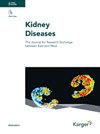巨噬细胞联合疗法:肿瘤免疫治疗的新策略
IF 3.2
4区 医学
Q1 UROLOGY & NEPHROLOGY
引用次数: 16
摘要
背景:免疫系统细胞可以抑制肿瘤的生长和进展;然而,免疫细胞也可以促进肿瘤细胞的生长、存活和血管生成,这是免疫抑制微环境的结果。在过去的十年中,越来越多的新的治疗策略侧重于逆转肿瘤微环境(TME)的免疫抑制状态,将TME重新编程为正常状态,并进一步激活免疫细胞的抗肿瘤功能。大多数“热瘤”都包裹着促进肿瘤生长的M2巨噬细胞,在多种肿瘤中,M2巨噬细胞积聚到肿瘤胰岛导致预后不良。因此,如何揭示更多的免疫抑制信号,将M2型肿瘤相关巨噬细胞(tam)逆转为m1型巨噬细胞,是逆转免疫抑制状态的关键。除了在肿瘤免疫治疗中对tam进行再教育外,巨噬细胞作为先天免疫系统的中枢效应器和调节剂,在基于巨噬细胞的细胞治疗中具有吞噬和免疫调节的能力。关键信息:我们回顾了目前基于巨噬细胞的细胞疗法,这些疗法利用基因工程增强巨噬细胞的抗肿瘤功能,以促进新型基因工程免疫细胞疗法的应用。TAM再教育与巨噬细胞为基础的细胞策略的结合可能使我们更接近于实现治愈癌症的最初目标。本文就巨噬细胞的特性、免疫状态和肿瘤免疫治疗策略进行综述,以期为今后巨噬细胞免疫治疗提供线索和证据。本文章由计算机程序翻译,如有差异,请以英文原文为准。
Macrophage-Based Combination Therapies as a New Strategy for Cancer Immunotherapy
Background: Cells of the immune system can inhibit tumor growth and progression; however, immune cells can also promote tumor cell growth, survival, and angiogenesis as a result of the immunosuppressive microenvironments. In the last decade, a growing number of new therapeutic strategies focused on reversing the immunosuppressive status of tumor microenvironments (TMEs), to reprogram the TME to be normal, and to further activate the antitumor functions of immune cells. Most of the “hot tumors” are encompassed with M2 macrophages promoting tumor growth, and the accumulation of M2 macrophages into tumor islets leads to poor prognosis in a wide variety of tumors. Summary: Therefore, how to uncover more immunosuppressive signals and to reverse the M2 tumor-associated macrophages (TAMs) to M1-type macrophages is essential for reversing the immunosuppressive state. Except for reeducation of TAMs in the cancer immunotherapy, macrophages as central effectors and regulators of the innate immune system have the capacity of phagocytosis and immune modulation in macrophage-based cell therapies. Key Messages: We review the current macrophage-based cell therapies that use genetic engineering to augment macrophage functionalities with antitumor activity for the application of novel genetically engineered immune cell therapeutics. A combination of TAM reeducation and macrophage-based cell strategy may bring us closer to achieving the original goals of curing cancer. In this review, we describe the characteristics, immune status, and tumor immunotherapy strategies of macrophages to provide clues and evidences for future macrophage-based immune cell therapies.
求助全文
通过发布文献求助,成功后即可免费获取论文全文。
去求助
来源期刊

Kidney Diseases
UROLOGY & NEPHROLOGY-
CiteScore
6.00
自引率
2.70%
发文量
33
审稿时长
27 weeks
期刊介绍:
''Kidney Diseases'' aims to provide a platform for Asian and Western research to further and support communication and exchange of knowledge. Review articles cover the most recent clinical and basic science relevant to the entire field of nephrological disorders, including glomerular diseases, acute and chronic kidney injury, tubulo-interstitial disease, hypertension and metabolism-related disorders, end-stage renal disease, and genetic kidney disease. Special articles are prepared by two authors, one from East and one from West, which compare genetics, epidemiology, diagnosis methods, and treatment options of a disease.
 求助内容:
求助内容: 应助结果提醒方式:
应助结果提醒方式:


